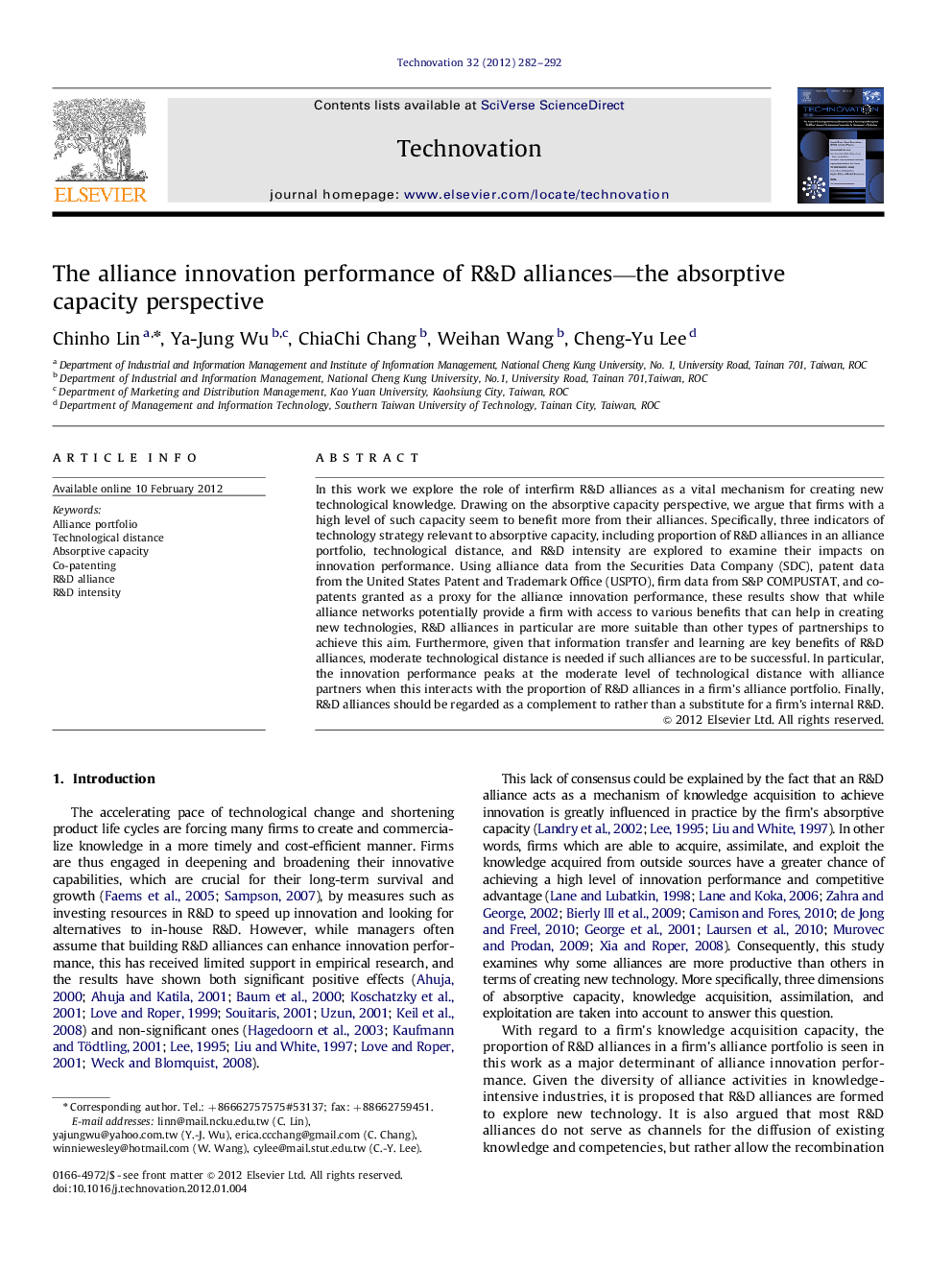| کد مقاله | کد نشریه | سال انتشار | مقاله انگلیسی | نسخه تمام متن |
|---|---|---|---|---|
| 1022166 | 941326 | 2012 | 11 صفحه PDF | دانلود رایگان |

In this work we explore the role of interfirm R&D alliances as a vital mechanism for creating new technological knowledge. Drawing on the absorptive capacity perspective, we argue that firms with a high level of such capacity seem to benefit more from their alliances. Specifically, three indicators of technology strategy relevant to absorptive capacity, including proportion of R&D alliances in an alliance portfolio, technological distance, and R&D intensity are explored to examine their impacts on innovation performance. Using alliance data from the Securities Data Company (SDC), patent data from the United States Patent and Trademark Office (USPTO), firm data from S&P COMPUSTAT, and co-patents granted as a proxy for the alliance innovation performance, these results show that while alliance networks potentially provide a firm with access to various benefits that can help in creating new technologies, R&D alliances in particular are more suitable than other types of partnerships to achieve this aim. Furthermore, given that information transfer and learning are key benefits of R&D alliances, moderate technological distance is needed if such alliances are to be successful. In particular, the innovation performance peaks at the moderate level of technological distance with alliance partners when this interacts with the proportion of R&D alliances in a firm's alliance portfolio. Finally, R&D alliances should be regarded as a complement to rather than a substitute for a firm's internal R&D.
► Co-patents as the performance measurement reflects specific alliance innovation.
► Absorptive capacity is used as the explanatory mechanism in this study.
► Technological distance moderates more significantly when R&D alliance is higher.
► R&D alliance is a complement to rather than a substitute for firms' internal R&D.
Journal: Technovation - Volume 32, Issue 5, May 2012, Pages 282–292